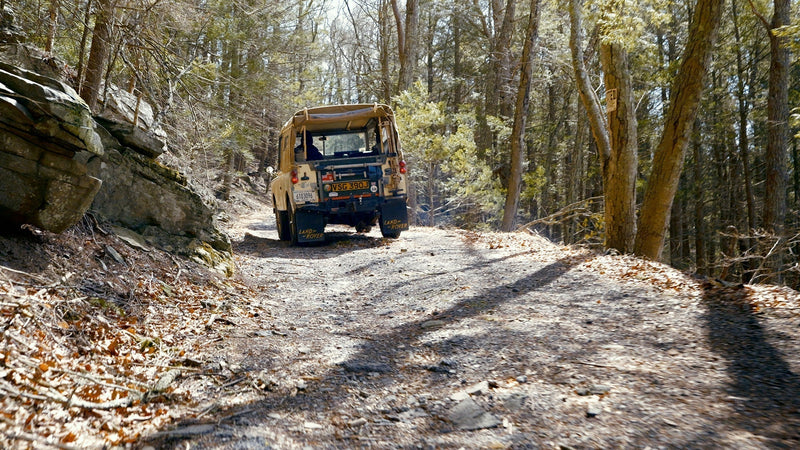A few weeks ago, I had the distinct pleasure of finally visiting the UK’s first and only business campus dedicated to classic cars, restorations, racing, parts manufacturing, etc. You’ve probably heard of the place if you’ve been reading Petrolicious, but I’m not here to add another article on Bicester Heritage. Instead, I paid a visit to one of the workshops that occupies some garage space in this compound of brick and Britain. But even beyond the fact that it’s operating out of a former RAF bombing base, it’s still one of the coolest workshops I’ve been inside.
It’s called Classic Performance Engineering, and while the name isn’t a prizewinner in the creativity category, it gets the point across; this place isn’t flipping repainted rust buckets, and you’re infinitely more likely to see a deconstructed D-Type than someone smearing Bondo over a wavy fender.





My job as an automotive engineer and a classic car consultant sees me traveling around quite a bit to visit different people and places like this one because I often work on the authentication process of verifying the condition and history of these machines in person—meeting the caretakers, talking to the mechanics, physically inspecting the cars, getting hands on. The perk of course is spending days at workshops like this one.
This visit was based on a similar situation, and therefore I got to enter the shop as an engineer rather than a tourist, meaning I was there to for the mechanical and less for the aesthetics. I love the combination of both aspects though, how the same car can represent so many things at once. If you have the chance to spend intimate time with a car to really appreciate its form and its function, you start to truly understand what it may have been like to create it from nothing. In my visit though, I was examining a car that’s already packed a few decades under its belt, and though I can’t discuss what it is, there was plenty of other cars to look at inside and outside the shop.


Martin Greaves and his team were very welcoming and engaging for the entirety of my visit, and their operation is definitely an impressive one, a standout in a big sea of mediocre efforts. Classic Performance Engineering has specialized in race preparation, long-term racing assistance, and all other manner of service and restoration for vintage car and racing enthusiasts, and it’s all done to the highest degree of accuracy. Whether it’s the aforementioned Jag in the corner, the skinned Maserati 250F next to it, the souped-up 911, or the MGs parked outside, all these vehicles receive careful and knowledgeable attention.





That’s the crucial part, the knowledge. There are plenty of skilled fabricators, painters, and engine tuners out there, but it’s nothing without the right direction, the right intent. For me the most important aspect of restorations is conservation—preserving the history and story the car has to tell while reseting its clock of decay. Not only is this crucial for today’s market value that is still in many cases coming around to the importance of originality, but on a broader scale this is also crucial for the keeping of a historical record, of preserving heritage from our past. Martin and his team share this sentiment of course, and it shows in the painstaking levels of patience they muster to get the details right.
A typical classic car restoration requires a good deal of knowledge, patience, and quite frankly, some money, but simply starting from scratch and rebuilding the vehicle to make it “like new,” “factory fresh,” etc.? That’s just not comparable to the amount of work needed to be put into conservation and preservation. Martin and his team are doing exactly that kind of work here, and they dedicate all their time to every little detail in order to preserve the history of each car, and beyond being impressed with their workmanship, you have to respect them and their work for this approach alone.
Another big aspect of their work is dedicated to actually racing these vintage cars, and if you often find yourself at historic races in Europe, you’ve probably come across their rather famous “red truck,” if not a bunch of the cars that have passed through their shop doors.







Once the cars have been serviced, modified, restored, or otherwise prepped for the next race, Martin then makes use of the Bicester Heritage’s own test track on the grounds. As an amazing race engineer and rather successful driver himself, he strongly believes in the value of testing a car until you’ve extracted everything you can for its purpose. Every car should be tested, fine-tuned, and be able to reach its full potential. I have been invited back to witness a few of these shakedown and tuning tests (and to have a go myself, which I am very excited about!)—I can’t wait to share this upcoming experience with you as well! In the meantime, I hope you enjoy the gallery I’ve put together in the rare moments I wasn’t totally absorbed by conversation.






























































